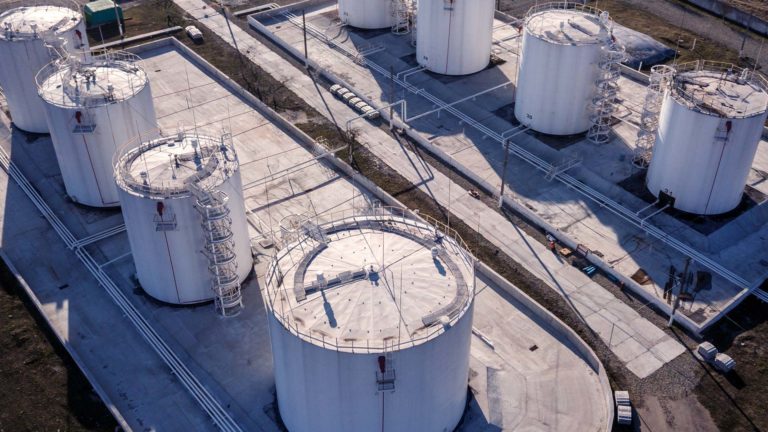Comprehending the Key Actions In Tank Welding Inspection Procedures
Comprehending the Key Actions In Tank Welding Inspection Procedures
Blog Article
A Thorough Overview of Storage Tank Welding Inspection Criteria and Methodologies for Improved Weld Top Quality and Performance
The value of welding examination criteria in the production of storage tanks can not be overstated, as they serve as the backbone for ensuring weld integrity and functional integrity. Different assessment methods, including visual evaluations and advanced non-destructive screening approaches, are crucial in recognizing possible imperfections that can jeopardize performance.
Importance of Welding Examination Specifications

Welding inspection requirements encompass a variety of criteria, consisting of material requirements, welding procedures, and credentials of personnel associated with the welding process. By implementing these standards, companies can methodically determine and fix potential flaws, thereby minimizing the likelihood of expensive fixings or devastating failings. Strenuous inspection methods promote a society of accountability and precision, motivating welders to keep high levels of craftsmanship.

Common Welding Inspection Methods


Ultrasonic Examining (UT) is an additional common method, utilizing high-frequency audio waves to identify inner problems that may not be visible on the surface. This approach is specifically reliable for determining spaces or inclusions within the weld steel. Magnetic Bit Evaluating (MT) is also extensively utilized, especially for ferromagnetic products, as it exposes surface and near-surface defects with the application of electromagnetic fields and ferrous particles.
In Addition, Fluid Penetrant Testing (PT) detects surface-breaking issues by applying a penetrant to the weld and then utilizing a developer to attract out the penetrant. Each of these methods contributes to a thorough evaluation strategy, making certain that welds satisfy the rigorous high quality standards needed in tank building and construction.
Regulative Standards and Conformity
Regulatory requirements and compliance are necessary components in making sure the safety and integrity of welded structures in container check this site out building - Tank Welding Inspection. These criteria serve to develop minimum requirements for material properties, welding procedures, and examination practices, consequently reducing the threat of structural failings and enhancing overall performance
Key companies, such as the American Culture of Mechanical Designers (ASME) and the American Welding Society (AWS), supply standards that are extensively adopted in the market. Conformity with these standards not only makes sure adherence to ideal practices however additionally fulfills legal and contractual responsibilities, guarding the interests of stakeholders.
Regulative bodies commonly mandate adherence to specific codes, such as ASME Code Section IX for this page welding certifications and API 650 for bonded containers. These codes lay out requirements for welding techniques, credentials of employees, and screening approaches to confirm weld integrity.
Normal audits and assessments are crucial to maintaining compliance, as they assist determine variances from developed requirements. Non-compliance can cause substantial fines, task hold-ups, and safety hazards. Thus, a robust understanding of regulatory standards and a commitment to compliance are paramount in attaining high-quality and durable welded container frameworks.
Non-Destructive Examining Approaches
Just how can the honesty of bonded frameworks be guaranteed without triggering damage? Non-destructive testing (NDT) approaches supply a durable option, allowing inspectors to evaluate weld quality without compromising the product - Tank Welding Inspection. Amongst one of the most typical NDT methods are ultrasonic testing (UT), radiographic testing (RT), magnetic fragment screening (MT), and dye penetrant screening (PT)
Ultrasonic screening utilizes high-frequency sound waves to detect inner imperfections and identify product residential properties. It supplies specific dimensions and is particularly reliable for thick products. Radiographic screening includes passing X-rays or gamma rays through the weld, developing pictures that reveal architectural problems such as cracks or gaps. This technique is invaluable for analyzing the browse around here stability of complex welds.
Magnetic particle screening is suited for ferromagnetic products, where magnetic fields expose surface and near-surface interruptions. Dye penetrant screening utilizes a fluid color to highlight surface-breaking defects, making it a reliable technique for non-porous products.
Each of these NDT methods has distinctive advantages, enabling thorough evaluations customized to specific products and welding procedures. By applying these methods, sectors can guarantee the integrity and safety of welded frameworks, inevitably enhancing general efficiency.
Enhancing Weld Quality With Examination
Effective evaluation plays a critical role in enhancing weld high quality, working as a vital checkpoint in the fabrication process. By recognizing possible defects early, evaluations alleviate the threat of endangered structural integrity and guarantee conformity with market criteria. Using a mix of visual examinations, non-destructive testing (NDT) techniques, and mechanical evaluations, examiners can find concerns such as porosity, splits, and insufficient blend.
Implementing a robust inspection protocol not only improves the overall quality of welds but also fosters a culture of accountability among welders and makers. Normal training and qualification of examination employees make certain that they are outfitted with the essential abilities to identify and attend to prospective issues successfully. This positive technique reduces rework and associated costs, eventually adding to project performance.
In addition, detailed paperwork of evaluation searchings for offers important insights right into persisting concerns, promoting constant enhancement in welding practices. By leveraging advanced modern technologies, such as automated ultrasonic testing or digital radiography, weld top quality can be improved through more specific examinations. Finally, a strenuous evaluation process is vital in attaining top quality welds, guaranteeing safety, integrity, and long life in storage tank fabrication.
Verdict
In final thought, the execution of rigorous storage tank welding assessment criteria and approaches is necessary for making certain weld integrity and performance. By using a mix of aesthetic inspections, non-destructive testing techniques, and adherence to governing criteria, companies can effectively determine and alleviate possible issues.
Report this page